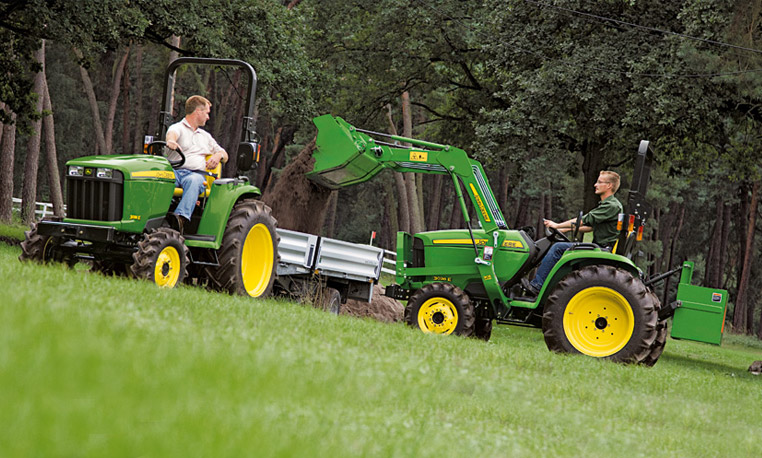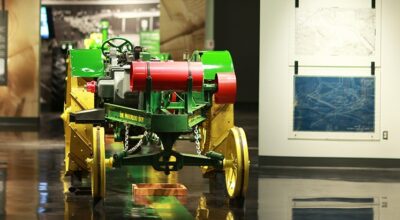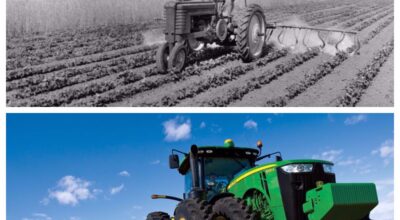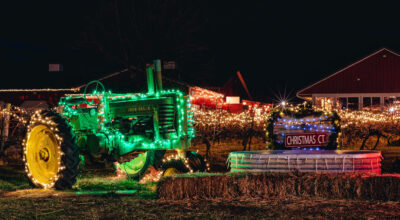When thinking about John Deere equipment, many of our minds run straight to farms with hundreds of acres being worked on by massive machines. However, while these types of machines might make you the talk of town at your home or ranch, they might not always be the most practical answer for your needs. This is where John Deere’s small tractor options come in.

Like making any other investment, it’s critical to understand what option best suits your needs. To help you narrow down the options and select the right model for you, we’ve outline eight questions you should answer prior to buying a small tractor (1 Family to 6D Series).
1. Do you want to stay protected against the elements?
John Deere’s variety of small tractors come with open or climate-controlled cabs. If you live in a part of the country that experiences up-and-down or unpredictable weather, you may want to consider a climate-controlled option. However, if you live in a more temperate climate, love the fresh air, or don’t mind working through the rough weather, an open operator station might be best.
2. What type of transmission do you prefer?
Car buyers typically have a preference between manual or automatic transmission when looking for the right fit. The same should be considered when buying a small tractor from John Deere. If you prefer an automatic transmission, your options will be slimmed down by about 50% and you will be that much closer to selecting the perfect model for yourself. If you don’t have a preference or prefer manual transmission, the available options will remain widespread.
3. How high do you need the loader to lift material?
One of the primary benefits of owning a small tractor from John Deere is its ability to transport material with a loader attachment equipped. However, you must find the tractor that matches your lifting height needs. Ask yourself or your John Deere dealer what model is best for lifting material into pickup trucks, commercial trucks, grain carts, or semi-trailers. Doing so will narrow your options and get you even closer to finding the perfect match.
4. What is the maximum lifting capacity you will require?
John Deere’s small tractor models range from 800 lbs. to 4,600 lbs. in maximum lifting capacity. If you won’t be transporting very heavy loads, it makes more sense to select a model on the lower end of this capacity range. However, if you take on projects that require heavy-duty lifting, one of the models at the higher end of this range might make more sense to consider. The choice is yours.
5. What type of grass will you be cutting or mowing?
If you plan on mowing a well-manicured lawn, a 1, 2, or 3 Family model might be the best fit for the job. However, if you want to take your tractor out to areas with taller, harder to cut grass, you will likely want to consider a larger option. If you aren’t sure or think you will need a model for both, discuss that with your dealer during the buying process as well.
6. How big of a deck do you need?
Deere’s small tractor options range pretty drastically when it comes to deck sizes (4 to 20 feet). The 6D Series allows for decks up to 20 feet, while smaller models like the 1 Family host decks as small as 4 feet. This all depends on the acres and job at hand. Once again, the choice is yours.
7. What are your baling requirements?
John Deere tractor owners very commonly use their machines for baling purposes. With this in mind, it’s important to think about the type of bales (round or square) as well as the dimensions of those bales when selecting the right model. Work with your John Deere dealer to find the perfect match for your baling responsibilities.
8. Are you looking to store the tractor in a garage?
Once the day’s work has been completed, you may want to put your equipment into a garage. This is an important factor to consider when buying as some of the larger small tractor models may not fit inside a traditional-sized garage. Consult with your John Deere dealer about the best ways to store larger tractor models that may not fit.
We hope this post helps guide you through the small tractor buying process whether you’re new to the scene or an equipment-buying veteran.
If you enjoyed this post or want to read others, feel free to connect with us on Facebook, or Twitter!


